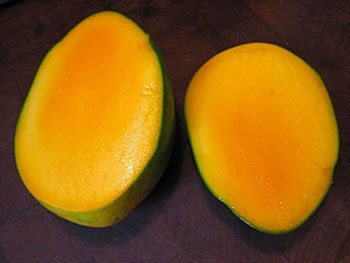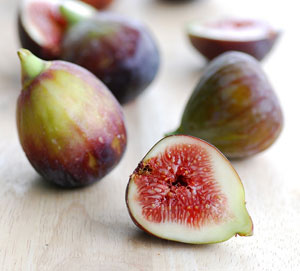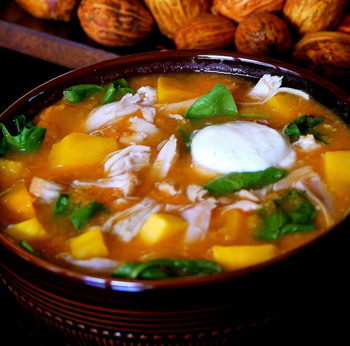
1. Hachiya. No, it is not a greeting. It’s a persimmon.
2. Fuyu. No, not the clothing line (that’s FUBU). They are also persimmons. Not to be confused with Russell Simmons (who incidentally created Phat Farm, not FUBU).
There are about a dozen varieties of persimmons grown throughout the world; only two are generally found in the States: Hachiya and Fuyu (Fuyugaki). Both are Japanese.
Though Hachiya and Fuyu persimmons are both fun to say and have similarly pumpkin colored skin, they are different in shape, texture, and culinary use. It’s important to know the difference between them; otherwise, your persimmon eating experience will be memorable for all the wrong reasons.
Hachiya persimmons are acorn shaped and have deeper orange skin with black streaks on it. They are astringent, which means they can be eaten only when fully ripened. A ripe Hachiya is extremely soft and should be squishy in your hand. Removing the thin skin reveals coral colored flesh so thick and glossy it looks like marmalade, and tastes like it too -- it's pleasingly sweet with hints of mango and apricot. Though they can be enjoyed raw, Hachiyas are really prized for baking.



 This past weekend at the BlogHer Conference, I was on a panel entitled, "The Meaning of Identity and The Value of Voice in a Crowded Foodblogging World." I shared the stage with three lovely and talented food bloggers: Dianne of
This past weekend at the BlogHer Conference, I was on a panel entitled, "The Meaning of Identity and The Value of Voice in a Crowded Foodblogging World." I shared the stage with three lovely and talented food bloggers: Dianne of 